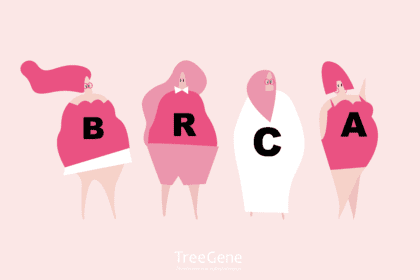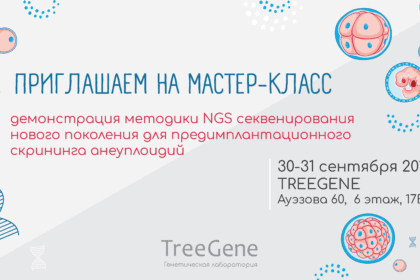Anthropologist Orazak ISMAGULOV is an academician of the National Academy of Sciences, corresponding member of the Bologna Academy of Sciences. In his life, his outstanding research coexisted with the years "under the hood" of the KGB. He lectured at the best universities in Europe and the United States. In an interview with Caravan, the scientist told what role Kanysh Satpayev, Indira Gandhi and Gennady Kolbin played in his fate...
Satpayev's blessing
We met this amazing man in Almaty, the city where he spent most of his scientific and personal life, a city where today he could not find work. Now Orazak Ismagulovich heads the Laboratory of Physical Anthropology in Astana.
He took up this science more than half a century ago, facilitated by none other than the first president of the Academy of Sciences of the Kazakh SSR, Kanysh Satpayev:
- When I entered graduate school, I was given the task in Moscow that if I do my PhD thesis on Kazakhstan, I need to collect bone materials there. The question arose: could our Republican Academy of Sciences organize an expedition to collect them? My supervisor, Georgy Debets, said that Satpayev came to Moscow for a meeting. I went to his hotel. I was amazed at his approach to identifying young people's aspirations! I saw him for the first time, he saw me too, no one asked for me. After telling him about my scientific problem, I heard in response: "Get ready for the expedition". Three days later the director of the Institute of Ethnography of the USSR Academy of Sciences, Sergei Tolstov, gave me a telegram, signed by Satpayev, that postgraduate Ismagulov was given 12 thousand rubles for three months of the expedition to collect the osteological material. At that time four Moskvich cars cost so much, even academicians did not receive such sum! Thanks to that expedition, I collected materials from the 16th, 18th, 19th and 20th centuries, defended my dissertation, and published a number of works on physical anthropology of ancient and modern population of Kazakhstan.
Back in those years, when very few people were allowed abroad, and then under the strict supervision of the KGB, Ismagulov began to travel to congresses in Japan and the United States. He will remember this later. By the way, in the United States, he was able to meet the famous anthropologist and paleontologist Gustav KENIGSVALD. In 1974, in order to study Indian endogamic populations, the scientist was sent to India with a group of anthropologists from the USSR:
- At the end of the expedition we were received by Indira Gandhi. She expressed her gratitude for our humble work.
The book was cut into pieces and burned
The study of Indian populations was only an episode in the life of the scientist, but he conducted comprehensive research on the genetic structure of the Kazakh population. In simple terms, Ismagulov studied Kazakhs up and down: their blood groups, skulls, teeth, and much more. But in 1977, the Soviet authorities labeled the scientist a dissident. Then he fell into disfavor for the first time for his scientific work on the population genetics of the Kazakh people. At that time, no book passed the censors of the Central Committee. It was easier to ban complex scientific conclusions than to try to understand them. A resolution of the Central Committee of the Communist Party of Kazakhstan to withdraw the book from sale went out immediately; the collected copies were cut into small pieces in the basement of the Academy of Sciences of the Kazakh SSR, and then burned. If Ismagulov had been a party member, he would have been given a showdown and stripped of his party card, but he was out of politics. Many Russian scientists stood up for their colleague. And Academician Alexei Okladnikov even offered to move to Novosibirsk and quietly do research. Why did the scientist worry the ideologists so much?

New Opal
In 1988, "Kazpravda" published a statement that "Ismagulov is Kunayev's theorist. It caught the eye of the then leader of the Kazakh SSR, Gennady KOLBIN. Ismagulov was not a party member, and Dinmukhamed Kunayev was seen only from afar, at meetings at the academy. The anthropologist was on an expedition in Uralsk, when a delegation of representatives of the regional committee, deputy regional prosecutor and other officials came to him to chase him out of the region with the wording "your work is anti-party:
- I was forbidden to do science in my home country!
The scientist decided to send a letter to the top leadership of the Union, but then all the typewriters were on the books and no one would type an objection to Kolbin. I had to go to my colleagues in Vilnius, type the letter and send it to MikhailGorbachev. There was no reply:
- It turns out that ten years after the first incident, I was punished again. I thought you don't get punished twice for the same thing. Turns out they do. The KGB took me in, a man followed me, rode with me in the bus, and one day he said: "Agai, I'm assigned to you." When the clouds thickened over me, they could put me in jail, I scattered my materials among my acquaintances - in Zhambyl, in Karaganda. After such friction I got diabetes, my right eye could not see. I live with my left eye, which is 50 percent visual. If Soviet power still existed, I wouldn't be alive. At that time it was so hard mentally and even physically.
After the collapse of the Soviet Union, the Presidium of the Kazakh Academy of Sciences rehabilitated the anthropologist's book. In 1993, he was invited to lecture on the physical anthropology of the peoples of Central Asia at the University of California. Then he was invited to the University of Bologna, the oldest in Europe, where Ismagulov was awarded the title of corresponding member.
Epicanthus with you
Orazak Ismagulov found evidence that modern Kazakhs are a mixed race, with 70 percent Mongoloid and 30 percent Old European traits. He says his research is an analysis of anthropological data and a four-thousand-year history of their formation, rather than a desire to add "Europeanness" to the Kazakhs and make them less of an Asian nation.
- Professor Dosayev wrote that "five hundred years ago there were no Kazakh people. He goes on to say that in recent years Kazakhs' faces have become more Caucasoid, that the frequency of epicanthus - the inner fold of the eyelid that covers the lacrimal tubercle of the eye - has decreased. He is fundamentally mistaken. The anthropological type of the Kazakh people was finally formed by the XIV-XV centuries. It will take thousands of years for you and me not to have an epicanthus, also called a Mongolian fold. Because the Mongolian fold, like the Mongolian spot appearing on the loins of infants, is genetically conditioned and does not disappear by itself in the population. I have studied the dynamics, the development of cranial morphology in the population of Kazakhstan from antiquity to modern times. In the Neolithic Era, 7-5 thousand years ago, our territory was inhabited exclusively by proto-European tribes. Modern Europeans had nothing to do with it. The ancient Europoids of Kazakhstan had their own peculiarities, possessed a low but broad face. Today Kazakhs rank second in face width after North American Indians. And studies of the Bronze Age population have shown: the ancient inhabitants of Kazakhstan had one hundred percent Caucasoid features. Such people lived 4,000 years ago both in the north and south of Kazakhstan. As the Early Iron Age (8th-4th centuries BC) approached, the beginning of the penetration of the Asian racial trunk could be traced. The level of this influence was such that the conventional share of Mongoloid elements in the racial composition of the population of Kazakhstan was 15 percent. Consequently, 85 were ancient Europoid. At the turn of our era (3rd - 5th centuries) Mongoloid elements were layered again, about 10 percents, so that the population of Kazakhstan at that time already possessed 25 percents of Mongoloid features. Skeletons and skulls in the kurgans, which archaeologists found, clearly show that it was an exclusively local population. During the Turkic time (from the fifth to the tenth century) the population of Kazakhstan became even more mixed, 50 to 50 percent. During the invasion of Mongols the proportion of Mongoloid elements increased by another 20 percent! Therefore it is impossible to say that this is pure Kazakh, or pure Russian, or pure Chinese. There is no such standard in the world. Everyone is mixed up, some more than others.
So be sure that in the third millennium descendants of the Kazakhs will preserve these features of appearance (70 percent - Mongoloid and 30 percent - ancient European features). Now Orazak Ismagulov prepares the next work on 40-centuries history of Kazakh people for the edition in Russian. The scientist says that he still believes in only one ideology - science.
"Karavan" wishes you, Orazak Ismagulovich, new scientific achievements and long life.
Marina Khegay, Almaty
The full text of the article is available at the following link: http://www.caravan.kz/article/91271
All rights to the materials of Karavan Newspaper belong to Kazakhstan Today Agency LLP.
"What is in the genes of the Kazakh?", Caravan Newspaper, №34 of 29 August 2014








